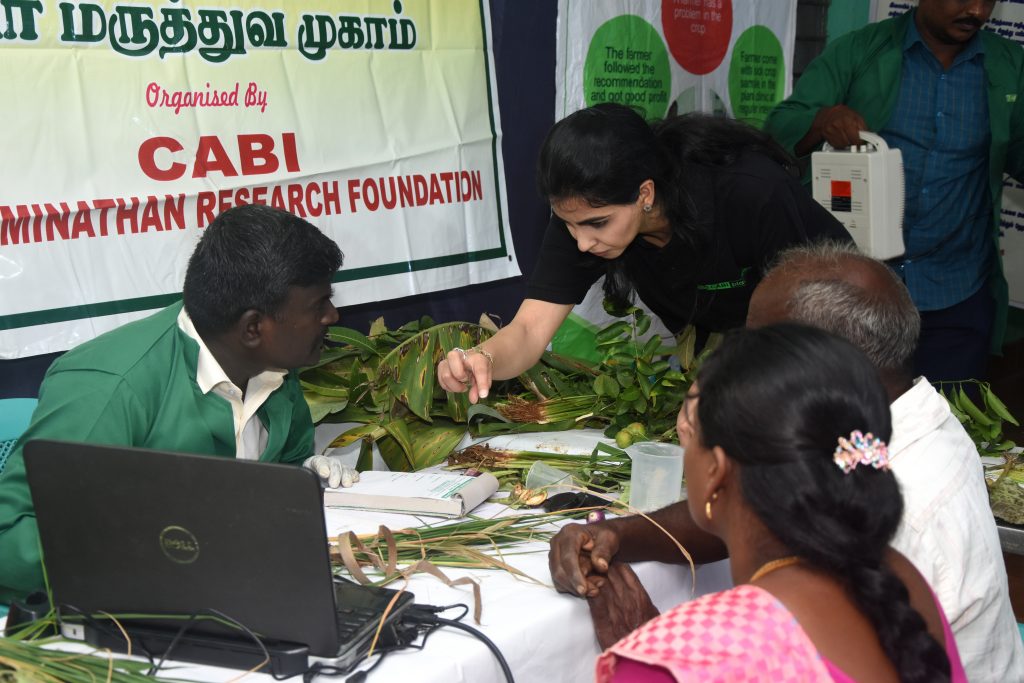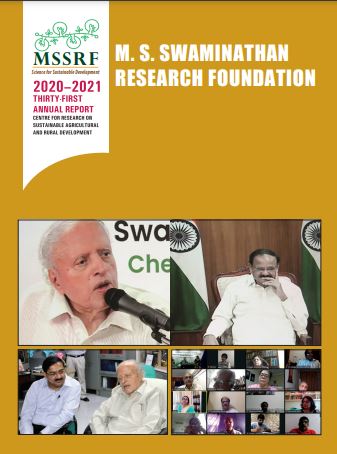M S Swaminathan Research Foundation has been implementing the Plant Clinic programme in collaboration with CABI (Center for Agriculture and Bioscience International) since 2012. Although the programme initially started in Tamil Nadu and Puducherry, it has now been extended to Assam, Odisha, and Kerala. The Plant clinics offer locally available, affordable, and environmentally safe recommendations to farmers for their plant health issues through trained plant doctors.
Ms Kritika Khannan, Communication Specialist at CABI in New Delhi, visited a plant clinic session held at Thirumalairayasamuthiram Village on November 3rd. She observed the session, interacted with men and women farmers, and learned about how the programme has been beneficial to them in receiving real-time advisories for plant health issues. Farmers expressed that dependency on input dealers has reduced, and led decreasing input costs, reduced yield loss, and better incomes. In this session, 45 farmers, including 12 men, participated.
During her visit, Kritika also toured the farmers’ fields and interacted with them. Mr Bharathidasan, plant doctor, conducted the clinic session, analysing plant specimens using a denolite microscope and other diagnostic tools. Major plant health issues identified included Rice Stem Borer, Rice Bacterial Leaf Blight, Rice Nematode, Rice Mite, poor tillering, Rice Gall Midge, Green Leaf Hoppers, and whiteflies and little leaf in Brinjal, as well as leaf and fruit canker in Citrus (Lemon).

Forty-six plant specimens were diagnosed, and all samples showed paddy infestation by sucking and chewing pests, along with significant white tip nematode damage. The present season is well-suited for growing paddy (late samba), and 90 per cent of the cultivable area is under super fine and fine varieties. Staggered sowing provided ample opportunities for harbouring stem borer and leaf roller. High relative humidity and interrupted monsoon facilitated the sudden increase of Rice Gall Midge and bacterial leaf blight.
The plant doctor emphasised preventive measures, including the installation of pheromone and light traps, the use of botanicals, and the timely release of bio-parasites. He advised spraying azadiractin 1.5 per cent at 400 ml per acre along with a wetting agent for controlling leaf roller, stem borer, and gall midge. The use of a leaf colour chart for nitrogenous fertilizer application was recommended to effectively control bacterial leaf blight. Additionally, spraying pseudomonas at four ml per liter or a fresh cow dung solution at 20 kg per acre can control the further spreading of BLB. Applying neem cake at 60 kg per acre basally was advised to prevent nematode damage. During the field visit, poor tillering was observed, and the spraying of Panchakavya at 3.5 liters per acre was recommended to improve growth traits.
The plant doctor also requested that the farmers follow integrated approaches, such as sticky traps and spraying neem leaf + garlic extract, which is recommended to effectively control whiteflies and hoppers. The clinical activities were widely welcomed by both regular and new participants. Dr R Rajkumar, Principal Scientist – MSSRF, facilitated the programme.

